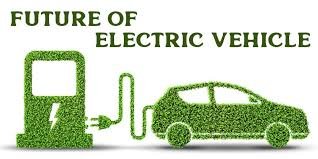
The electric vehicle (EV) industry has seen remarkable growth over the past decade, and 2024 is shaping up to be a pivotal year. With advancements in technology, increasing environmental awareness, and supportive government policies, the adoption of EVs is accelerating at an unprecedented rate. This article explores the key trends and future prospects of electric vehicles in 2024, highlighting the factors driving this transformation and the challenges that lie ahead.
Key Trends in 2024
Increased EV Adoption The global adoption of electric vehicles continues to rise, with nearly one in five cars sold in 2023 being electric. This trend is expected to continue in 2024, driven by consumer demand for sustainable transportation options and the growing availability of EV models across various price ranges.
Technological Advancements Technological innovations are at the forefront of the EV revolution. In 2024, we are witnessing significant improvements in battery technology, leading to longer ranges and shorter charging times. Solid-state batteries, which offer higher energy density and improved safety, are becoming more commercially viable.
Expansion of Charging Infrastructure The expansion of charging infrastructure is crucial for the widespread adoption of EVs. In 2024, governments and private companies are investing heavily in building fast-charging networks. This includes the installation of ultra-fast chargers along highways and in urban areas, making long-distance travel more convenient for EV owners.
Autonomous and Connected Vehicles The integration of autonomous driving technology and connected vehicle systems is transforming the EV landscape. In 2024, many EVs are equipped with advanced driver-assistance systems (ADAS) and vehicle-to-everything (V2X) communication capabilities. These technologies enhance safety, improve traffic management, and provide a more seamless driving experience.
Sustainable Manufacturing Practices Sustainability is a key focus in the EV industry. Manufacturers are adopting eco-friendly practices, such as using recycled materials and reducing carbon emissions during production. Additionally, the development of circular economy models, where batteries and other components are reused or recycled, is gaining traction.
Government Incentives and Policies Government incentives and policies play a crucial role in promoting EV adoption. In 2024, many countries are offering tax credits, rebates, and subsidies to encourage consumers to switch to electric vehicles. Additionally, stricter emissions regulations are pushing automakers to accelerate their transition to electric fleets.
Future Prospects
Market Growth and Competition The EV market is expected to continue its rapid growth in the coming years. According to forecasts, global EV sales are projected to reach 16.84 million units in 2024, representing a 21% year-over-year growth. This growth is accompanied by increased competition among automakers, leading to more affordable and diverse EV options for consumers.
Advancements in Battery Technology Battery technology remains a critical area of innovation. In the future, we can expect further advancements in solid-state batteries, which promise higher energy density, faster charging, and longer lifespans. Additionally, research into alternative battery chemistries, such as lithium-sulfur and sodium-ion, holds the potential to revolutionize the industry.
Integration with Renewable Energy The integration of EVs with renewable energy sources is a key trend for the future. Vehicle-to-grid (V2G) technology allows EVs to store and supply energy back to the grid, supporting the stability of renewable energy systems. This synergy between EVs and renewable energy can significantly reduce greenhouse gas emissions and enhance energy security.
Urban Mobility Solutions As urbanization continues to rise, the demand for efficient and sustainable urban mobility solutions is increasing. Electric buses, scooters, and shared mobility services are becoming integral parts of urban transportation networks. In the future, we can expect further innovations in these areas, including the development of autonomous electric shuttles and smart mobility platforms.
Challenges and Opportunities Despite the positive outlook, the EV industry faces several challenges. The availability of raw materials for battery production, such as lithium and cobalt, remains a concern. Additionally, the need for standardized charging infrastructure and the development of robust recycling systems are critical issues that need to be addressed.
However, these challenges also present opportunities for innovation and collaboration. Companies and governments are investing in research and development to find sustainable solutions and create a resilient supply chain for the EV industry.
The rise of electric vehicles in 2024 marks a significant milestone in the transition to sustainable transportation. With advancements in technology, supportive policies, and increasing consumer awareness, the future of EVs looks promising. As the industry continues to evolve, it will play a crucial role in reducing carbon emissions, improving air quality, and shaping the future of mobility.






